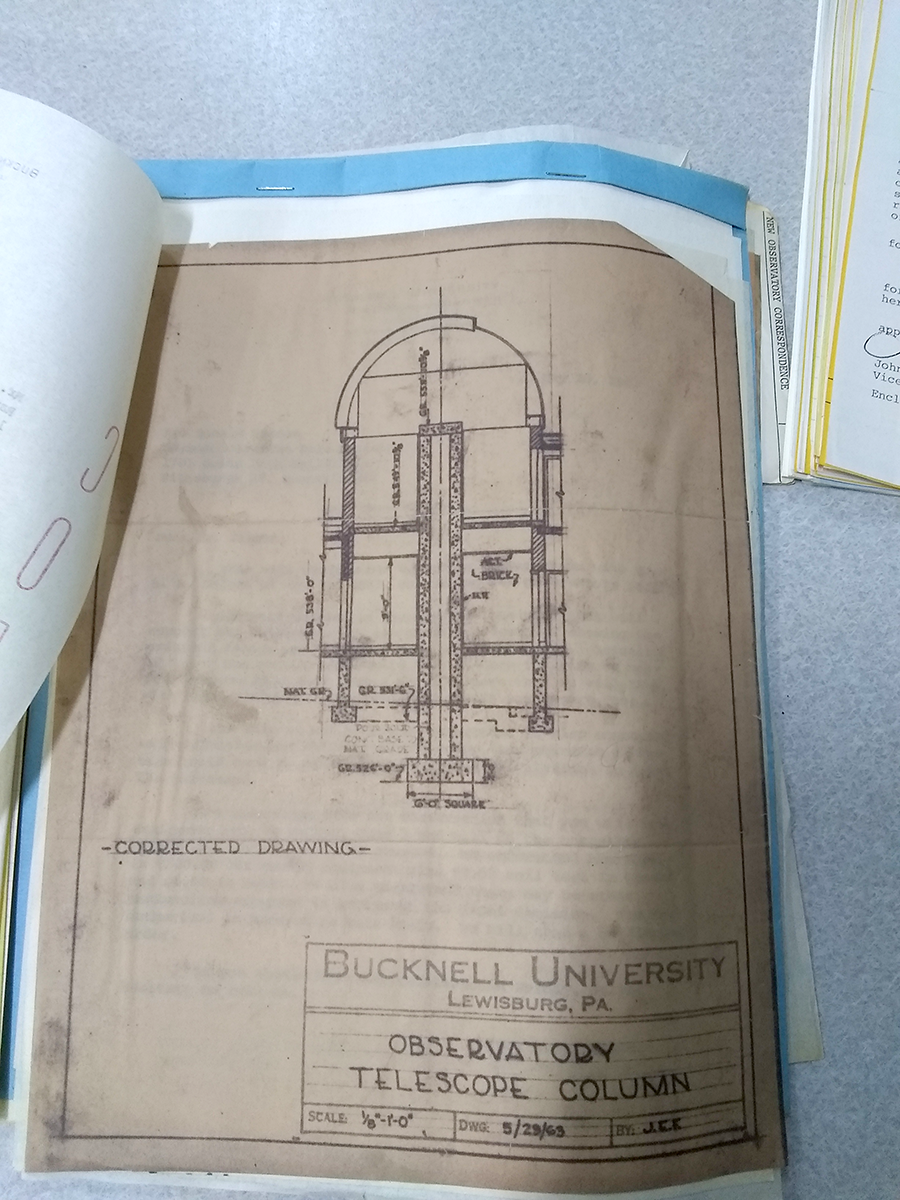
Our wonderful Clark refracting telescope support column, in all its masonry glory. Structurally isolated from the rest of the building so that footsteps don’t cause wobbles in the telescope’s field of view.
Sometimes, it’s the little things.
Discoveries in the Physics & Astronomy shop | Science, curiosities, and surprises

Our wonderful Clark refracting telescope support column, in all its masonry glory. Structurally isolated from the rest of the building so that footsteps don’t cause wobbles in the telescope’s field of view.
Sometimes, it’s the little things.
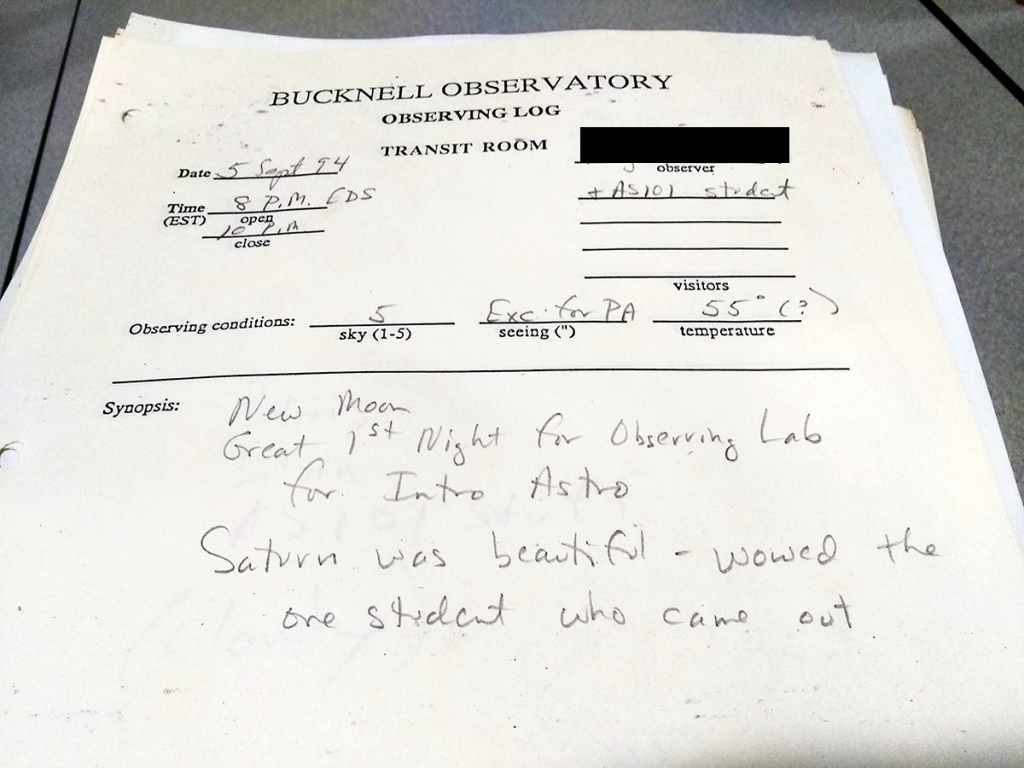
Your average TA for an Astronomy night lab is excited about their job. They not only took an Astronomy course, but liked it enough to come back. At night. Irregularly, as the weather permits, sometimes in the cold of a Pennsylvania winter. They’re enthusiastic about their job. We’re enthusiastic about them.
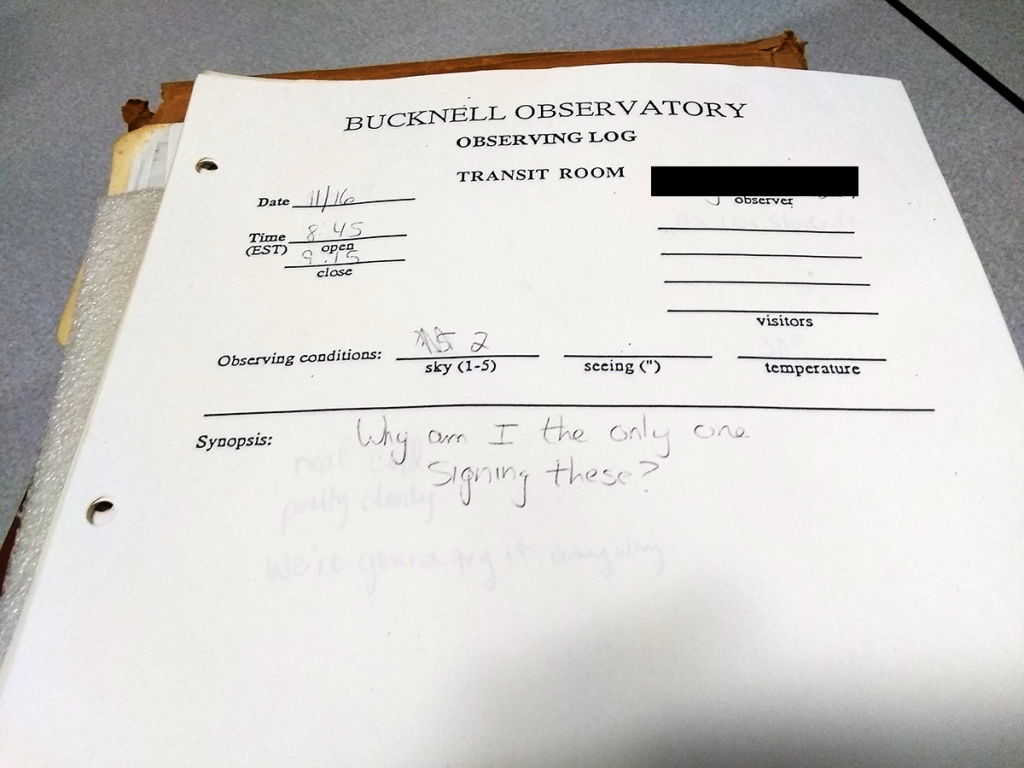
So when you find notes from almost three decades ago with student gripes? Totally understand. We wish every student could bring the same excitement to a night with telescopes and stars.
And, for the record: Saturn absolutely is beautiful through a telescope on a night with no moon. Just phenomenal.

Some years ago, back in 1887, the University received a lovely Clark & Sons refracting telescope, complete with a clock drive to track the stars against the Earth’s rotation. When a shiny new toy scientific apparatus arrives on your doorstep, it’s very important to confirm that it works as intended. Here, in an old notebook, we see the original data on the clock drive’s variance from the ideal sidereal tracking rate.
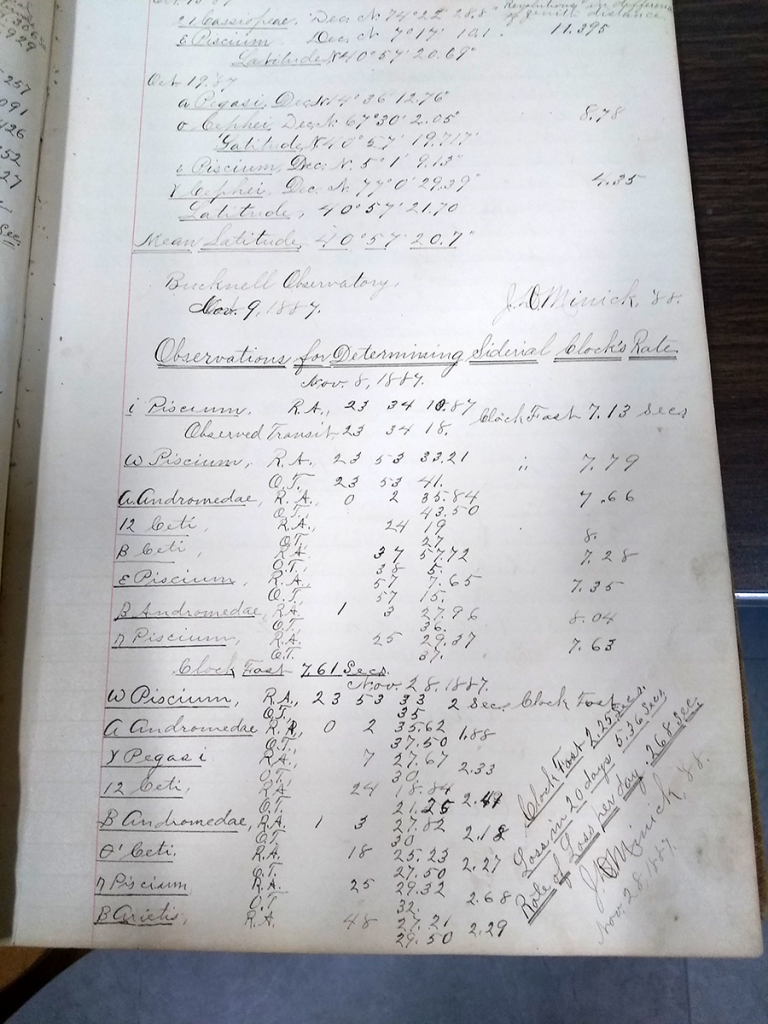
“Observations for Determining Sidereal Clock’s Rate Nov. 8, 1889”
Then follows a table of stars with known right ascension and declination, then a repeated set of measurements 20 days later. “Rate of Loss per day .268 sec.” Considering the frequency with which proper polar alignment and tracking proves a nuisance more than a century later, that seems pretty good. The clock drive is long gone, of course, so we can only guess at how accurate it was and stayed throughout the decades.
It looks like these entries were by a J. D. Minick, Class of ’88. Best guess is a John David Minick, graduate of Bucknell in 1888, listed as Prof. John D. Minick of Lenoir, N.C. in the Memorials of Bucknell University, 1846 – 1896. Astronomer, apparently. Mathematician? Physicist? At this point, we’re content with the mystery.
Around the same time, Bucknell was also the home of one Jacob Henry Minick, Class of 1891. He’s listed in the link above as from Orrstown, PA, in Franklin County. Any relation?
His name lives on at the university in the form of an endowed scholarship:
“The Jacob H. Minick Fund was established by a bequest from Jacob H. Minick, Class of 1891, the income of which is to be given each year to students who, because of some physical difficulty, are forced to use crutches during all of their college work.”
There’s a story there, no doubt.
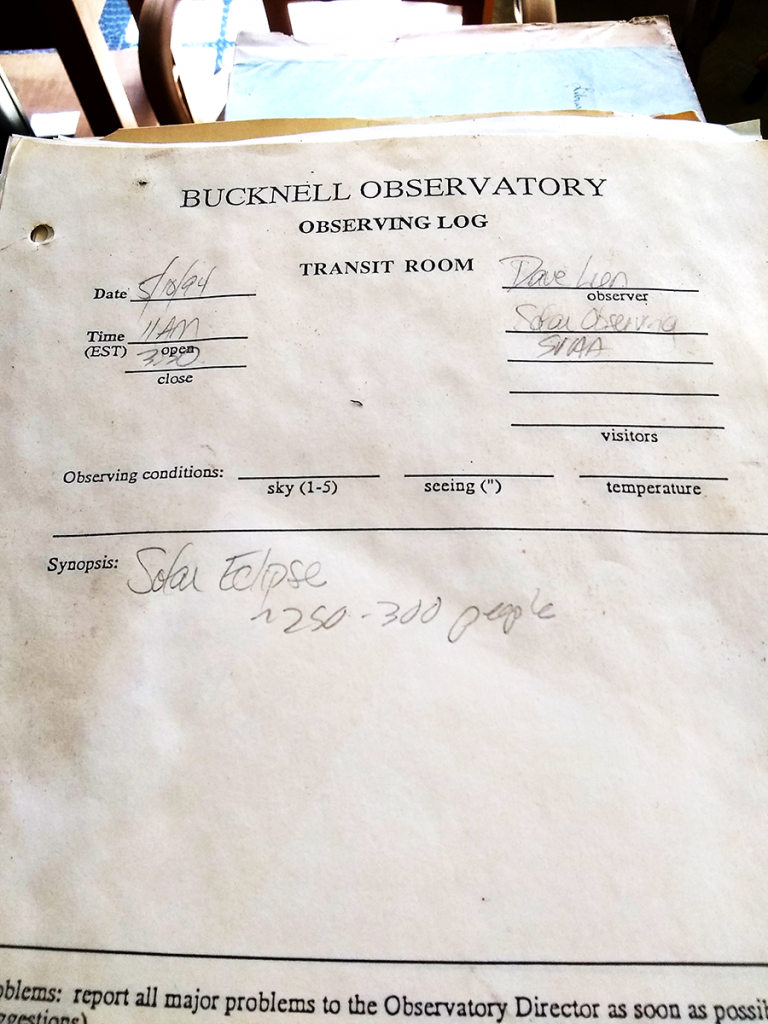
As we prepare for the next major solar eclipse in North America – mark your calendars for the 8th of April, 2024! – it’s fun to look back at Observatory records from previous eclipses. On May 10th, 1994, nearly 300 people congregated at the Observatory to take in the spectacle of a partial eclipse.
It’s worth noting that getting the full experience of totality requires a perfect combination of timing, location, and decent weather. Not simple.
This particular event was an annular eclipse, in which the moon’s apparent diameter was less than that of the sun, so that there was always a portion of the sun’s disc visible, creating an annulus (ring) when viewed along the path of greatest eclipse. Still amazing.
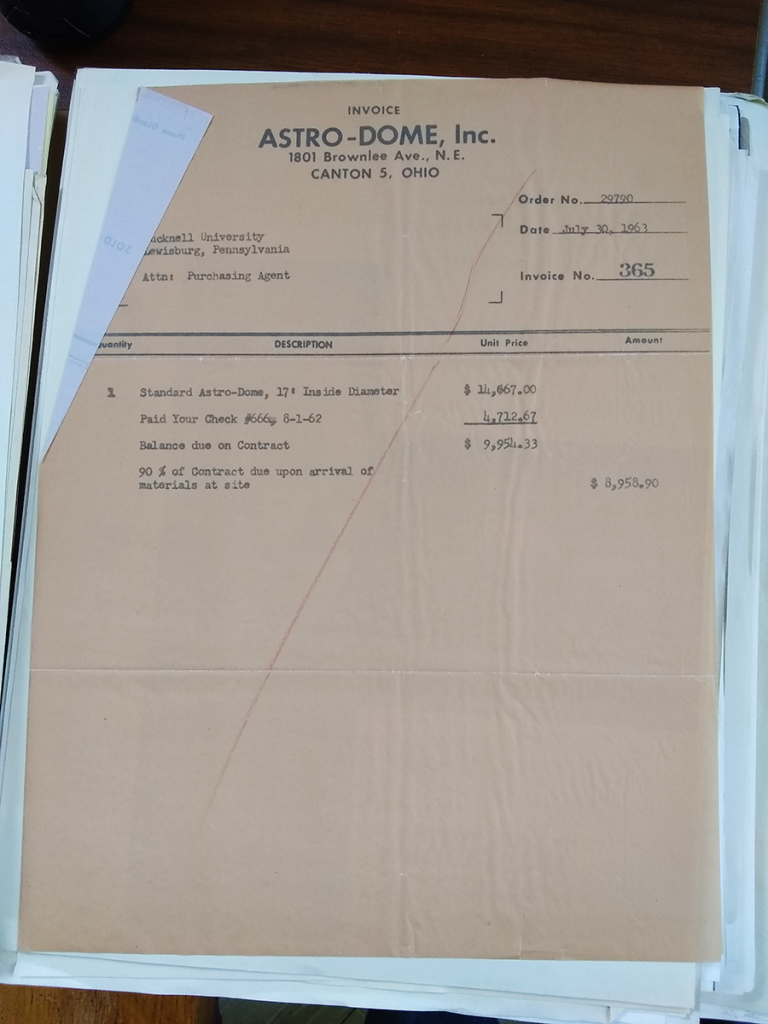
In 1963, one could purchase a Standard Astro-Dome with a 17′ inside diameter for the low, low price of $14,667. It must have been a worthwhile investment, because we’re still using it 60+ years later with no plans to update or replace it anytime soon.
Adjusted cost in 2023 dollars: $144,932.41.
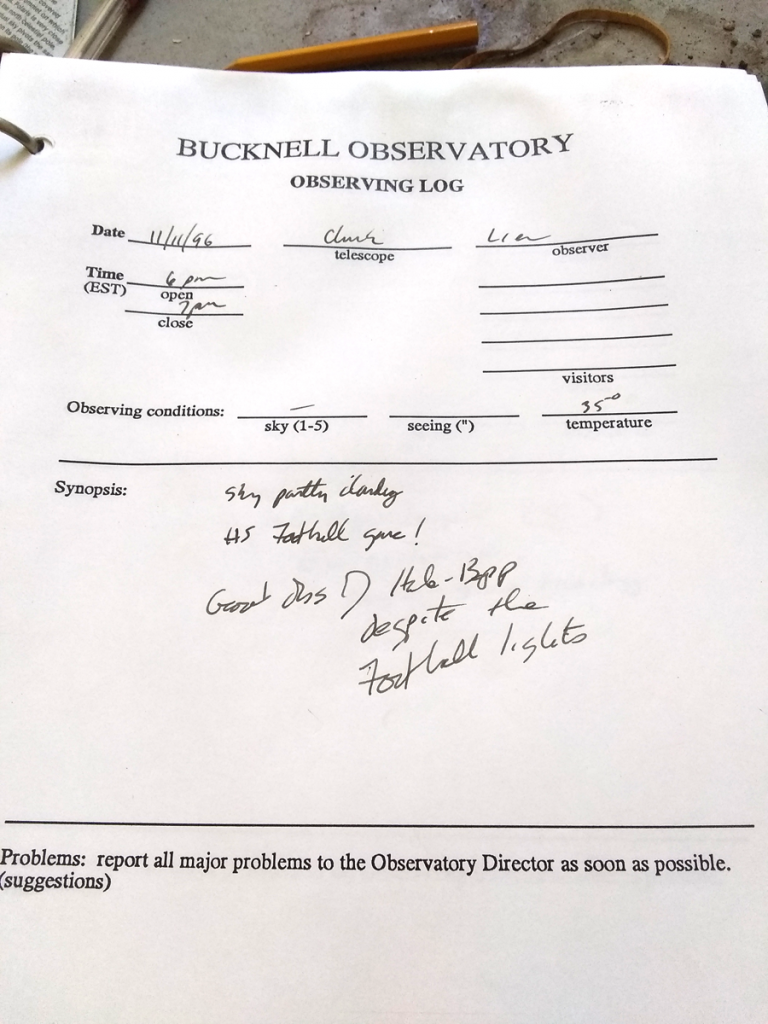
In cleaning out the Observatory, there are endless collections of observing notes from years past. Each a sheet, filled out by hand, with brief remarks on what was observed, the group in attendance, and anything else that seemed salient at the time.
Here, one of many sheets during the long period – about a year and a half – when comet Hale-Bopp could be seen in the sky. Of particular note, and still an issue for Observatory use today:
“Good obs of Hale-Bopp despite the Football lights”
Yup. More than a quarter-century later, and still the same issue with the football lights.